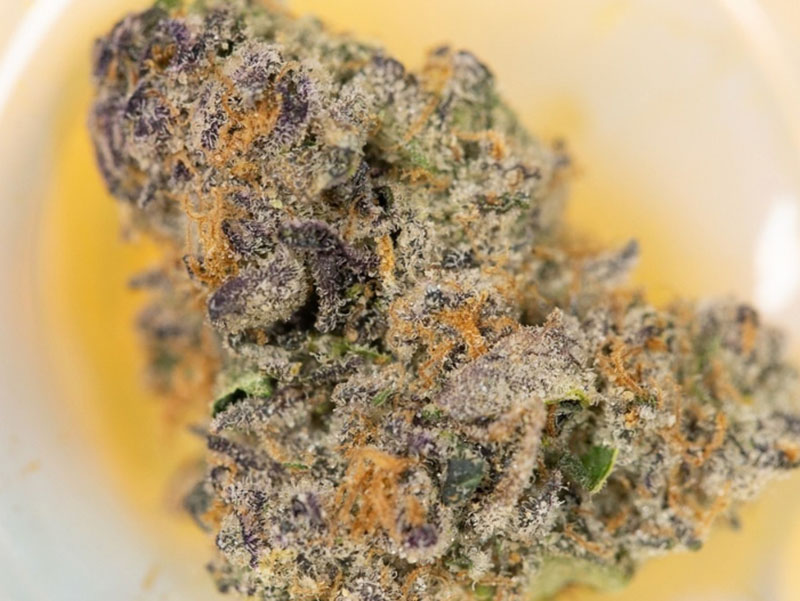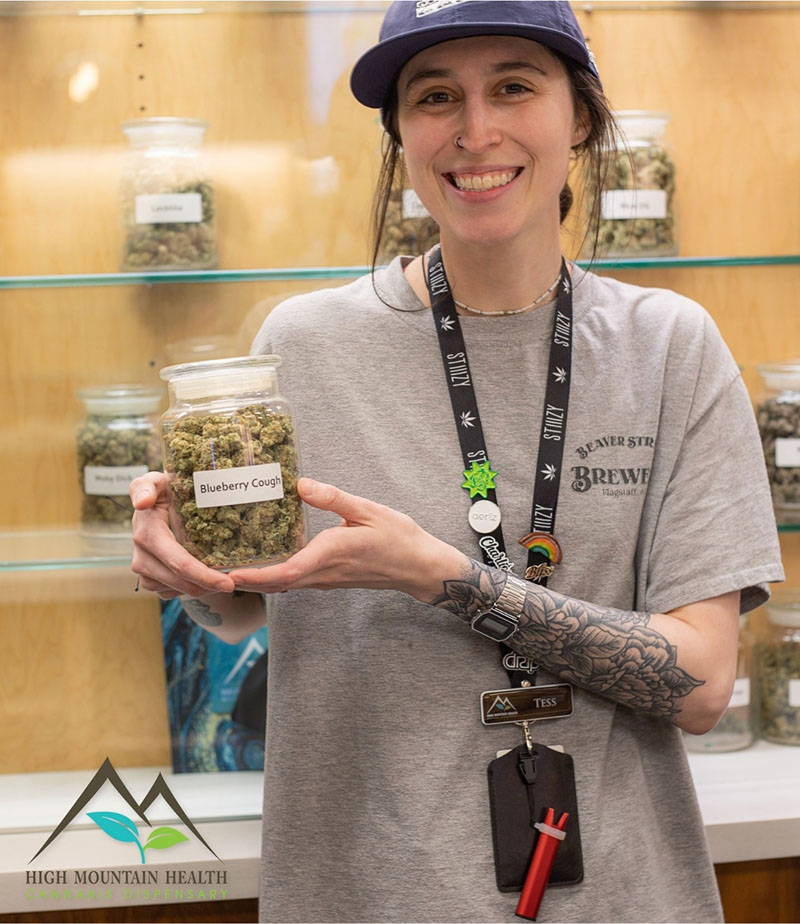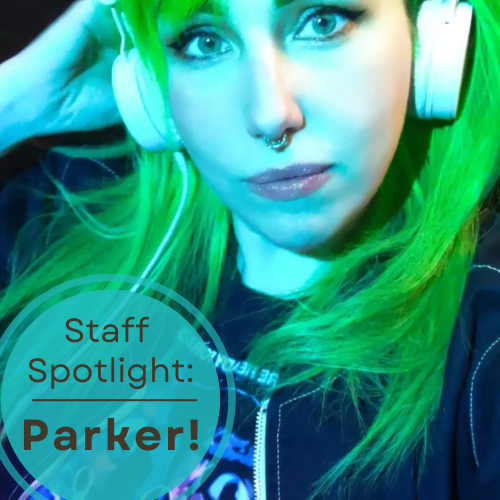Epilepsy Awareness
By Zachariah Finning
November is Epilepsy Awareness Month. This month hones its focus on the effects and treatments of the neurological disorder. This disorder has been long shrouded in stigma and mystery. Epilepsy leads individuals to have increased occurrences of seizures. Epilepsy surely has no bias in who it affects, but the condition is more prevalent in young children and older individuals. In this blog, we will discuss the history of Epilepsy and the maladies it brings upon the afflicted. We will also briefly touch upon the modern and common forms of treatment. Lastly, we will discuss the promise for CBD as a form of treatment for the disorder and the brave spirit who lead us in that direction.
The oldest mentions of Epilepsy are etched on a Babylonian tablet. This etching can be found in a chapter within a Babylonian text of medicine, containing 40 tablets, dating all the way back to 2000 BC. In this text, various forms of seizure types, which we recognize today as characteristic of Epilepsy, are accurately described. It emphasizes a “supernatural” nature to the condition with each seizure type correlating to the name of a spirit or God - typically evil in nature (S1). It wasn’t until the 5th Century BC that Hippocrates wrestled with the idea that the disorder was a condition of the brain, which at the time was a “revolutionary view.” The word Epilepsy stems from the Greek “Epilepsia” which translates to “take ahold of” or literally “to seize” (S1). Unfortunately, the rest of the ancient world was not as forward-thinking as Hippocrates and primary causes and treatments of the condition remained spiritual for centuries. There were many negative social stigmas surrounding individuals afflicted with the condition; even today those stigmas can still exist in some parts of the undeveloped world (S1). The standard of Epilepsy as an actual brain disorder did not see widespread acceptance until around the 18th and 19th centuries. As Neurology arose as a true medical discipline the concept became widely acknowledged distinctively in Europe and Northern America (S1). Our modern understanding of Epilepsy came to be in 1873 with a proposal by Hughlings Jackson, a Neurologist in London at the time. Jackson claimed that “[epileptic] seizures were the result of sudden brief electro-chemical discharges of energy in the brain” with the “characteristics of the seizures depending on the location of the discharges” (S1). His theory was proved to be true some decades later with the invention of the EEG, or electroencephalograph. The EEG was invented in 1924 by Hans Berger a psychiatrist in Germany. Berger’s EEG unveiled the presence of electro-chemical discharges within the brain. It also helped to show the difference in brainwave patterns associated with different types of seizures (S1). In more recent times development of and advances in structural and functional neuroimaging have led us to a better understanding of this disorder. These would include Computer Tomography Scanning (CT Scans), and Magnetic Resonance Imaging (MRI). They help us to see what areas of the brain may be most affected after and during an epileptic seizure. They also help us to detect a multitude of brain lesion types that may be the primary cause of an individual’s Epilepsy (S1).
Treatments for Epilepsy before the 19th century were largely spiritual and supernatural in nature. As mentioned, social stigmas around the disorder prevailed for centuries as the lack of understanding of the condition led people to believe in otherworldly causes. The earliest treatments for the condition mostly were concoctions of botanical and herbal remedies (S2). Most likely herbs and plants that were known for their calming properties. It was not until the end of the 1700s into the 1800s that Hippocrates’ view of the condition started to make its rise. Along with this newly accepted view of Epilepsy came medicinal approaches to curing or treating the brain disorder. In 1857 Sir Charles Locock, who was an obstetrician to Queen Victoria, made a vital observation. He recognized that “various inorganic bromide salts” happened to “result in sedative effects, and in the case of potassium bromide, caused impotence” (S2). He went on to find that in 14 out of 15 women with catamenial epilepsy, at the time commonly referred to as “Hysterical Epilepsy”, seizures were arrested when treated with potassium bromide (S2). Bromide continued to be looked at for treatment by Samuel Wilks, a distinguished British physician and in due time potassium bromide stood as the first drug therapy for Epilepsy. This specific medication however came with undesirable side effects including, but not limited to, “severe skin reactions and central nervous system side effects”. Due to these side effects, potassium bromide’s use in treating Epilepsy has been extremely rare for many decades although it is still used to treat seizures in dogs and other animals (S2). It wasn’t until 1912 that a better option appeared on the medicinal market for the treatment of Epilepsy. A group of German chemists working at Bayer discovered that a specific barbituric acid, commonly known as barbital, produced sedative and hypnotic effects in dogs (S2). After recognizing the compound's attribute, they then synthesized a related compound: phenobarbital. Originally marketed by Bayer as insomnia therapeutic the drug was first used for Epilepsy by Alfred Hauptmann a doctor who treated patients suffering from the disorder. In terms of both effectiveness and tolerability, the drug was much more desirable. Even today phenobarbital is still one of the primary treatments of Epilepsy in infants, young adults, and the elderly in still developing countries (S2). In the early 1930s, thanks to a simple electroshock seizure model, Merritt and Putnam screened hundreds of compounds eventually discovering Phenytoin. By 1938 this drug showed promising clinical efficacy and it seemed to be less sedating and more effective than either potassium bromide or phenobarbital (S2). This discovery added credibility to the “systematic approach for ASD (Anti-Seizure Drug) screening which was to become the mainstay of epilepsy experimental therapeutics for decades to come” (S2). These medications and therapeutics paved the way for more comprehensive drug screening approaches lead by the National Institutes of Neurological Disorders and Stroke in the 1970s (S2). To this day ASD therapeutics and medications remain the primary form of medical treatment for Epilepsy and side effects range drastically from patient to patient.
With ASD medicinal therapeutics being the forefront of Epilepsy treatment for over a century, some brave new souls have looked toward medicinal cannabis for treating Epilepsy. Although in the mainstream, CBD and/or THC for the treatment of Epilepsy is rather new. There are some fascinating facts buried deeper in our history. The connection between cannabis and Epilepsy can be traced all the way back to 1800 BCE. There is strong evidence from Sumerian and Akkadian tablets suggesting the use of cannabis to treat seizures (S3). Fast forward to the 10th century and the Persian physician Ali ibn al-‘Abbas al-Majusi prescribed a sort of pressed hemp leaf juice to be snorted through the nose for the treatment of Epilepsy (S3). Sir John Russell Reynolds, the physician for Queen Victoria, even recommended cannabis for the treatment of the disorder in 1890; he also recommended the plant for a variety of other ailments (S3). In recent history, cannabis and its cannabinoids have seen their return to the frontline of treatment mainly due to parents of epileptic children, or patients themselves, whose ASD’s have failed to help. One much-popularized case, in particular, is that of Charlotte Figi, a little girl who suffered from Dravet Syndrome (S3). This is a rare and severe form of Epilepsy which can make one suffer hundreds of seizures a week. Charlotte’s personal malady escalated to the point of 300 grand mal seizures in one week (S3). Figi’s parents were hopeless and at a loss until they looked towards cannabis. They used a high CBD strain that Charlotte’s mother made into an oil. She would feed this oil to Charlotte during meal times and sooner than later her seizures de-escalated, and eventually stopped (S3). Charlotte’s success with the high CBD strain oil, and her parent’s bravery for trying it, paved the way for further research and development into cannabis and its cannabinoids as a treatment for Epilepsy. Dr. Joshua Kaplan who holds a Ph.D. in neuroscience, and happens to be a cannabis expert, explains why cannabis and specifically CBD may be beneficial to those who suffer from Epilepsy. “The excitatory/inhibitory balance [of the brain] is maintained by brain cells that release chemicals that either excites other brain cells or inhibit them. In epilepsy, that balance tips towards excessive excitation, causing seizures. Generally, cannabis helps those with epilepsy by restoring the brain’s excitatory/inhibitory balance” (S3). Kaplan also goes on to note that certain forms of epilepsy, such as Charlotte Figi’s, are resistant to [ASD] treatment due to a reduction in brain inhibition. He states that CBD helps to restore this inhibition. As for which cannabinoid is best for treating the brain disorder Kaplan puts it pretty simply. “You wouldn’t use THC to treat epilepsy for the same reason you wouldn’t use an antipsychotic for treating anxiety. THC can reduce seizures because it reduces the brain excitation, but doesn’t increase inhibition”. He also states that “...one of the challenges with using THC is that it can induce a tolerance, which overall would be bad for the treatment of Epilepsy” (S3). The most recent developments in the treatment of Epilepsy with cannabis is the FDA approved drug Epidiolex. Epidiolex is a 98% CBD extract (s3). The extract is in an orally ingestible form and is used to treat Dravet Syndrome, Lennox-Gastaut Syndrome, and Tuberous Sclerosis, all causing varying forms of Epilepsy. It is aimed at patients one year of age and older, as used for newborns and infants under one is not researched (S4). The drug works effectively because the high concentration of CBD helps with the inhibitory processes in the brain, ultimately calming the seizures. With a recently FDA approved drug primarily being a full CBD derivative, we will hopefully see more scientific backed research, and acceptance, into the field of medicinal CBD as a treatment for Epilepsy.
Epilepsy and our battle to control its effects on the human body has been almost as long as human history. It has been called many things from “The Sacred Disease” in Greek times (S1) to “Hysterical Epilepsy” in 19th Century London (S2). It has gone from being stigmatized and treated by shamans, to a not-so-uncommon neurological disorder treated by doctors. It is only in the last century and in recent decades that we have truly started to understand brain disorder in a truly scientific manner. Pharmaceutical Anti-Seizure Drugs do remain the primary form of treatment for those afflicted with Epilepsy. However, for those who see no beneficial results with ASD, there is promising evidence supporting medicating with CBD. The drug Epidiolex approved by the US FDA shows that the scientific value of this cannabinoid in treating the condition is valid and warranted. As time goes on, we in the medicinal industry hope to see more social approval of CBD as a common form of treatment. What we can say for sure, is that the history of Epilepsy and its treatments are far from over.
Sources:












